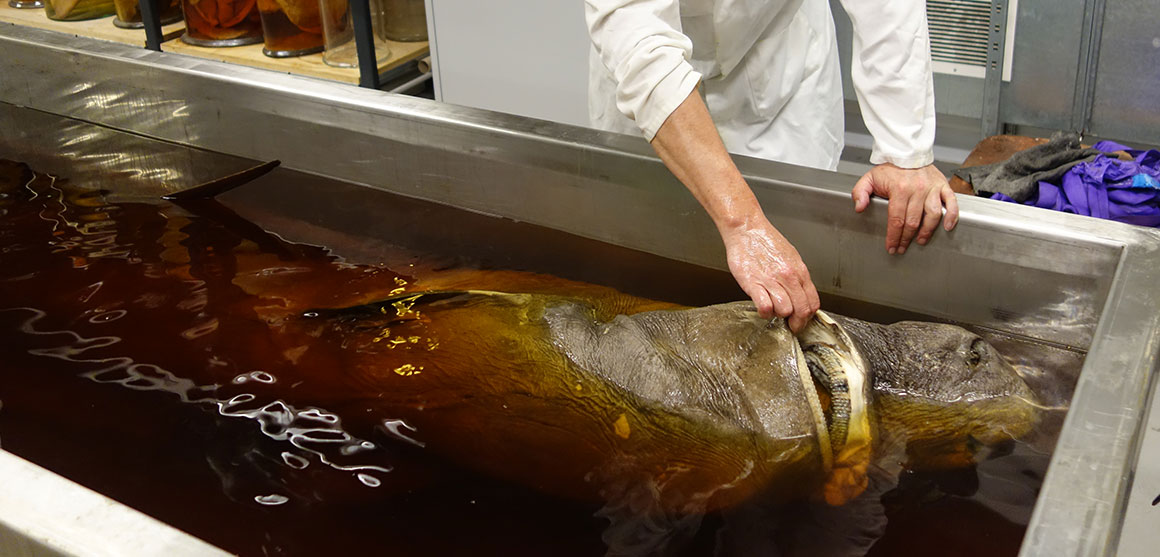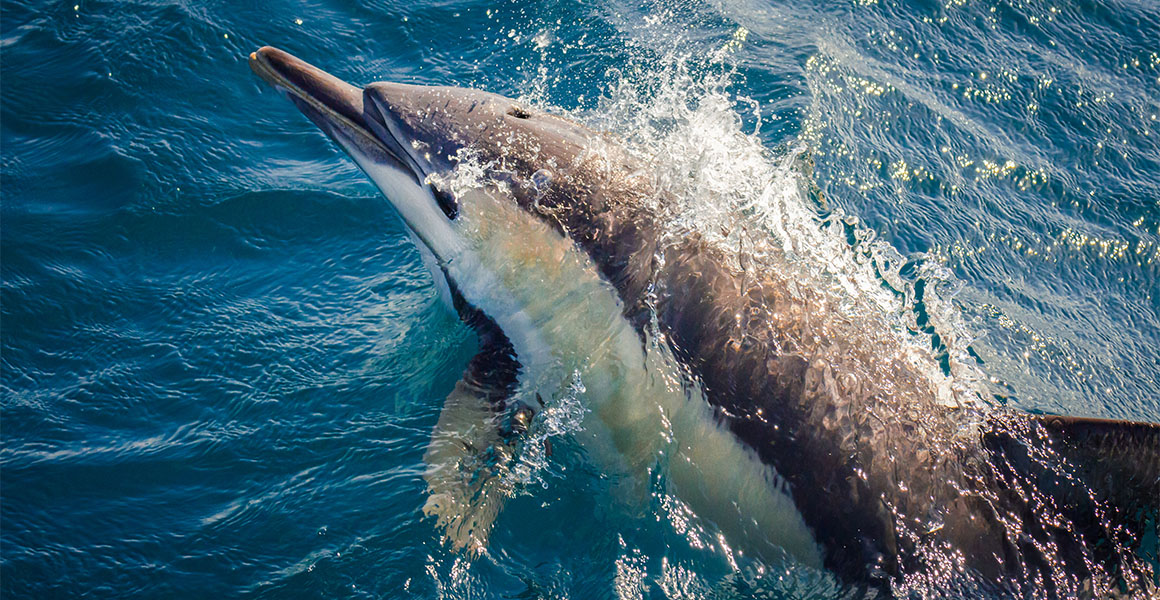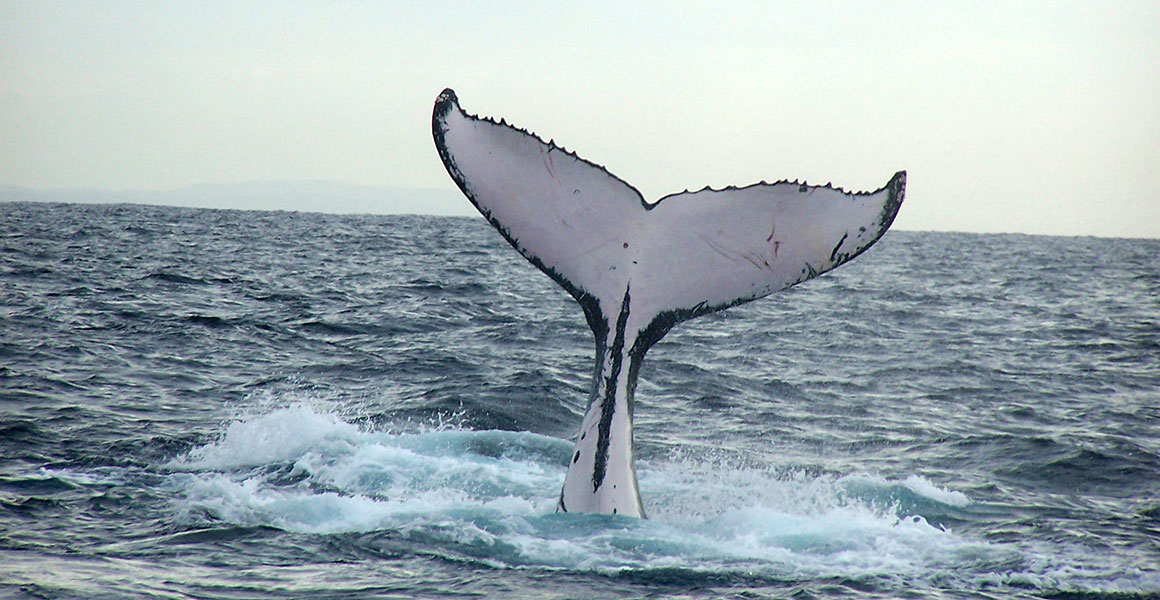The first complete Greenland shark specimen has been preserved for research at the Museum after washing up on a Northumberland beach.

The shark was beached at Embleton Bay, Northumberland in October last year. Greenland sharks regularly swim around the coast of Scotland and further north, but this one was found near the southern tip of their usual range.
Scientists know relatively little about Greenland sharks as they spend most of their time in the deep sea and are rarely seen in coastal waters.
Researchers will now be able to study the Museum’s perfectly preserved specimen in the hope of finding out more about these elusive creatures.
Super specimen
Museum fish curator James Maclaine said that it’s a huge boost for the Museum and for researchers across the world to have such an intact Greenland shark specimen.
'It is only the eighth specimen of a Greenland shark (Somniosus microcephalus) in our collection, and considering that the others are stuffed or just parts, we’re very pleased to have it,' said Maclaine.
Greenland sharks are the largest known deep-sea fish and one of the biggest shark species, growing up to seven metres in length and weighing as much as 1,400kg. The creatures grow at a very slow rate and are thought to be one of the longest-living vertebrates, with lifespans of up to 200 years.
The new specimen is a three-metre long female and thought to be immature. Female Greenland sharks may not reach sexual maturity until age 100.
Despite being a young shark, it still dwarfs its new companions. 'It is almost certainly the largest alcohol-preserved fish the Museum has ever had!' said Maclaine.
Watch the video to see the shark being entered into the collections.
Final meal?
The dead shark was found by walkers at Embleton Bay and taken to the University of Newcastle, where it was frozen for temporary preservation. Earlier this year it was given to the Museum by Claire Hedley of the Northumberland County Council and Per Berggen of Newcastle University.
The preservation process takes several months. The Museum’s curation team began by defrosting the shark over several days. Next, they removed the shark’s intestines to examine the contents of its gut.
As Greenland sharks live at depths of 1,200 metres, little is known about their lifestyle, including what they eat – so this was a rare opportunity for scientists to learn about their feeding habits.
But there wasn’t much in the gut except for a few tapeworms. The shark had also emptied its stomach before death.
'Essentially the stomach is turned inside out through the mouth and the contents are expelled. This is something that sharks sometimes do when they are stressed,' said Maclaine.
How to pickle a shark
The team took several tissue samples for molecular analysis before lowering the shark into a tank of formalin, a solution of formaldehyde.
'This initial stage is called fixation and serves to toughen the specimen up and halt any kind of decay or degradation,'said Maclaine.
'It’s very important for the formalin to get into every part of the specimen so we had to extensively inject it first, which was not easy seeing as sharkskin is like leather crossed with sandpaper.'
After being immersed in formalin for a couple of months the shark was washed in water and transferred to a large tank of alcohol in the Museum’s Spirit Collection, where it now rests alongside other oversized specimens.
Long-term resident
The shark has been databased and its details are available online so that other researchers can request visits to conduct research. One request has come in already for a tissue sample for DNA analysis to study genetic diversity within the species.
The shark is now in a condition to be preserved for centuries. Over time it could reveal many secrets about the lives of Greenland sharks.
'We don’t know what kind of research techniques will be available in the future and what sort of information we may one day be able to extract from it,' said Maclaine. 'But we now have a great, almost completely intact specimen waiting until that time comes.'

British wildlife
Find out about the plants and animals that make the UK home.




Don't miss a thing
Receive email updates about our news, science, exhibitions, events, products, services and fundraising activities. We may occasionally include third-party content from our corporate partners and other museums. We will not share your personal details with these third parties. You must be over the age of 13. Privacy notice.
Follow us on social media